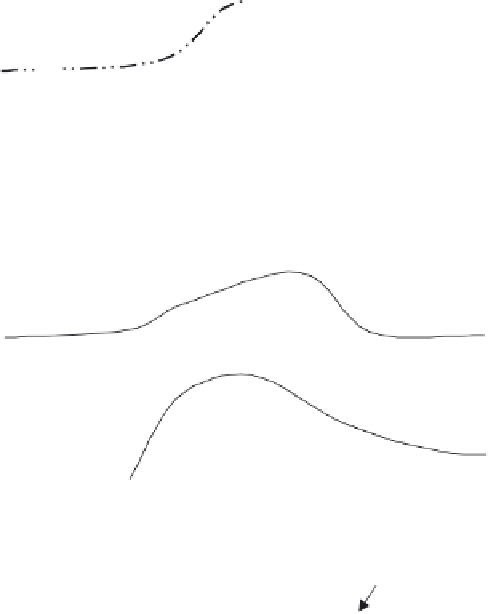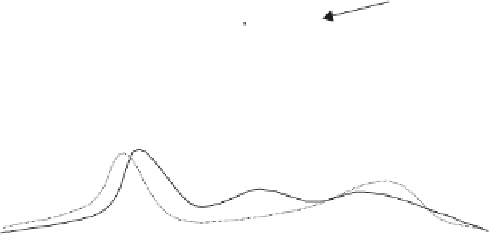Environmental Engineering Reference
In-Depth Information
Si
Total P
Large grazer resistant
phytopla
nk
ton
Cyanobacteria
Diatoms
Small body
rapid growing
zooplankton
Large zooplankton
Macrophytes
Total young of the year fish
Larvae of individual fish species
All fish
Stratification
Autumn mixing
Winter
Spring Summer
Autumn Winter
FIGURE 20.5
A hypothetical successional sequence in the epilimnion of a temperate lake
with summer stratification.
larvae and macrophyte populations expanded. The different routes of for-
mation, lake level fluctuations, and sizes of reservoirs formed are hypothe-
sized to have led to different successional trajectories.
One of the more detailed studies of succession in a reservoir was done
on the Gocsalkowice reservoir in Poland. This reservoir was filled in 1955
and observations were summarized in 1986. The Secchi depth increased
from 1 to 2 m during the first 20 years but then decreased to less than 1
m because of anthropogenic nutrient inputs in the watershed (Kasza and
Winohradnik, 1986). Diatoms and chlorophytes dominated in high num-
bers in the 1950s and 1960s but were replaced by cyanobacteria in the
1980s (Pajak, 1986). Macrophyte growth was extensive within a year af-
ter the reservoir was filled, but few species were present. Emergent macro-













Search WWH ::

Custom Search